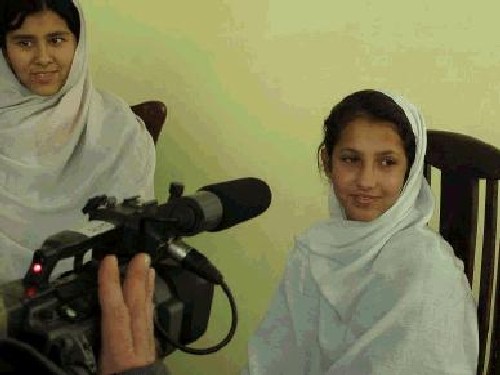| Posté le: Avril 27 2010,10:42 |
Si vous avez écrit ce rapport, vous trouverez ici un bouton qui vous permettra de le modifier 
|
Adresse postal de votre organisation/institution
|
P. O. Box 141, Dennison, MN 55018
|
Adresse E-mail de votre organisation/institution
|
dina@childrenscultureconnection.org
|
Adresse du site Web de votre organisation/institution
|
www.childrenscultureconnection.org, www.warkidsrelief.org
|
Téléphone de votre organisation/institution
|
1 612 414 7801
|
PRIORITÉS. Cliquez sur TOUS les aspects d'une culture de paix qui sont des objectives importantes de votre organisation. |
EDUCATION FOR PEACE
SUSTAINABLE DEVELOPMENT
HUMAN RIGHTS
WOMEN'S EQUALITY
DEMOCRATIC PARTICIPATION
UNDERSTANDING, TOLERANCE AND SOLIDARITY
FREE FLOW OF INFORMATION
INTERNATIONAL PEACE AND SECURITY
|
PLUS HAUTE PRIORITÉ. Cliquez sur l'aspect de la culture de paix qui est l'objectif le plus important pour votre organization. |
UNDERSTANDING, TOLERANCE AND SOLIDARITY
|
PARTENARIAT (réponse facultative) : A quels réseaux et associations votre organisation participe-t-elle pour renforcer le mouvement global pour une culture de la paix ?
|
We work with 12 grassroots NGOs serving at risk children throughout the Third World.
|
ACTIONS (réponse impérative) : Quelles actions ont été entreprises par votre organisation pour favoriser une culture de paix et de nonviolence pendant la décennie (2001-2005)? Si vos activités de 2001-2005 ont déjà été publiées dans le rapport de 2005, ils seront incluses dans le rapport de 2010.
|
Using a three-part approach to leadership training, CCC programs offer American students a unique opportunity to learn about life beyond our borders by establishing peer relationships in these foreign lands, and ultimately, taking action steps to effect positive change in the lives of these new found friends.
Curriculum: Working with middle school level classrooms and organized youth groups in the US, CCC creates and implements educational programs and activities that teach students about culture in 12 different countries. Using a variety of unique teaching tools and games, CCC’s strategy is to spark interest in learning about world culture by making it fun and engaging.
Connection: Working with CCC’s partner charities that serve at-risk children in these 12 countries, American students are able to put a human face to these cultures by establishing peer relations with children who also participate in the international end of the programs. Connections are made through a variety of mediums including letters, photography, art, journaling, t-shirt design, and story writing.
Community Service: CCC aims to cultivate a new generation of philanthropists who can help disadvantaged children abroad become the future problem solvers of their own communities.
After each program, CCC offers suggestions about ways in which young Americans can use their own talents, creativity, and energy to make a difference in the lives of their new-found friends. Students willing to initiate an idea (stage a fundraiser, supply drive, etc.) are supported by CCC’s resources to help them successfully execute their project.
CURRENT PROGRAMS:
AFGHANISTAN: U.S./Afghan Junior Investor Program
IRAQ: U.S./Iraq Young Ambassador Program 2010
HAITI: U.S./Haiti Young Leaders Program
GUATEMALA: Sibley Elem. (MN)/La Limonada Peaceflag Exchange
NIGERIA: Minnesota/Numan School T-Shirt Exchange

A girl from Baghdad, now living in an IDP camp in Sulemianya, shares her poster with student friends in the US.

A girl from Khost, Afghanistan, filmed in Kabul as she tells about her school.

Students in a classroom in Talafar, Iraq, are writing their stories to send to classes in the US.
|
PROGRES (réponse impérative) : Votre organisation a-t-elle connu un progrès vers une culture de paix et de non-violence pendant cette deuxième moitié de la décennie (2005-2010) ? Merci de ne pas déborder cette espace pour votre réponse. |
We have observed that the participating students begin to see themselves
as global citizens able to effect change, able to make a difference in challenging situations. Our educational component helps the students learn about each other and to connect on a level of mutual respect and understanding.
|
OBSTACLES (réponse impérative) : Votre organisation a-t-elle rencontrer des obstacles empêchant vos initiatives pour une culture de paix et de nonviolence? Expliquez-les, svp. Merci de ne pas déborder cette espace pour votre réponse.
|
Some parents object to their children studying the culture of people whom they fear, but it has not stopped any of the programs. Students are encouraged to consider such objections in a respectful way as they become aware of how some of their own thinking has changed.
|
PROJETS (réponse facultative) : Quels nouveaux engagements sont prévus par votre organisation pour favoriser une culture de paix et de nonviolence à court, moyen et long terme?
|
We want to expand the curriculum reach to middle schools statewide and then nationwide.
|
MOUVEMENT MONDIAL (réponse facultative) : A votre avis, comment peut-on renforcer la culture de paix et de la nonviolence dans le monde?.
|
Encouraging students to engage in cooperative projects that promote a sharing of information about each other can lead to an understanding of our shared humanity among people of all ages and all places. Seeing how working together makes it possible to overcome difficulties gives each student the power and the awareness of that power to make a difference in the world. Encouraging and supporting such educational work can play an important role in creating a culture of peace.
|
| Back to top |
|



